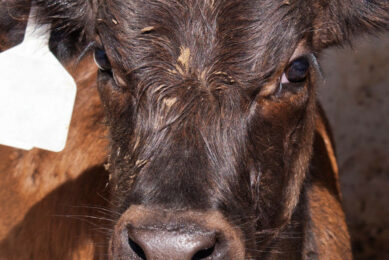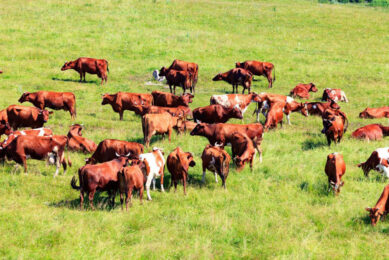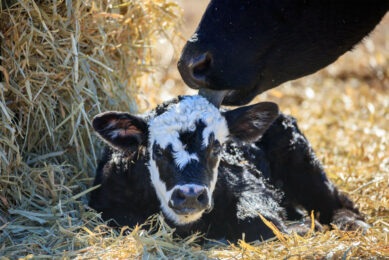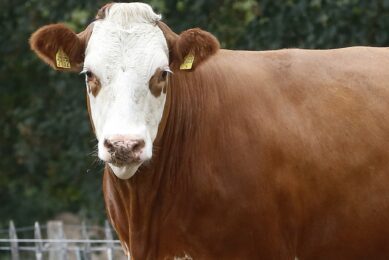The new Holstein breed – what has changed and what is still to come?
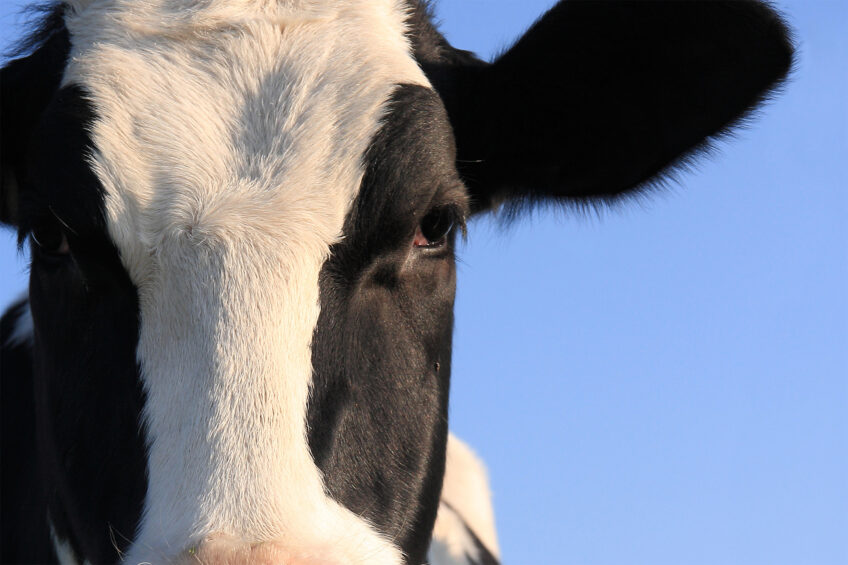
Meet the new Holstein cow. Compared to 5 years ago, she now produces milk with a significantly higher fat content than her predecessors while her milk volume inches upwards every year through genetic and nutritional improvements. She’s also shorter in stature than her peers of years ago. Because of these major breeding trends, many dairy farmers who have had Jerseys are now switching to Holsteins.
“For about 30 years, we breeders focused on higher protein content because that’s what consumers wanted,” explained Tim Abbott, who, together with his wife Sharyn, own Borderview Genetics in Vermont. “But now there’s a strong demand for higher-fat cheese, yogurt and premium ice creams. Now, it’s not considered a bad thing to have milk fat in our diet. So, within about 5 years, the average Holstein milk fat percentage has grown from 3-3.5% to about 4%. There is now a wide variety of ‘higher-fat Holstein bulls’, and whether the customer is buying semen or embryos, nobody wants low-fat genetics,” Abbott said.
Emily Bosch, senior communications manager at Holstein Association USA, does not expect this upward climb to halt. “The genetic trends for milk, fat and protein production are extremely favourable for Holstein cattle, so we expect to see these increases to continue in the future,” she says.
Kevin Jorgensen, senior Holstein sire analyst at Select Sires in Ohio, agrees that Holsteins have not yet reached a milk fat plateau. “Absolutely, we’re going to see additional gains,” he says. “The emphasis placed upon this is not waning. Some clients I work with believe it could be much higher by the end of the decade through genetics and nutrition.”
More fat
At the same time, however, Abbott noted that cows that produce higher milk fat percentages generally produce less milk than those with lower percentages. The genetics seem to work against each other, as it were, with the cow’s energy essentially going into making higher-fat milk instead of more milk.
Jorgensen explained: “Yes, we breeders don’t select for single traits and yes, there are extreme milk volume bulls, but they have genetic components in direct negative correlation with that. So, we try to strike a balance. That is, sires with Extreme Predicted Transmitting Ability milk – which produce daughters with more fat in their milk by weight, not necessarily by percentage – are more likely to also pass on higher mastitis resistance as well as lower values for fertility. Achieving a balance means that we select for the highest possible combined fat and protein possible in the milk without sacrificing fertility and health.”
Size of Holsteins
Many Holstein farmers and breeders prefer moderately-sized cows but also cows that produce lots of milk. But years ago, as Holsteins were bred to produce more milk, their bodies became larger and taller. By the first decades of this century, the situation was getting a little out of hand. High-stature (tall) Holstein cows were causing issues in robotic milking systems, and in traditional milking systems, these ladies were becoming too large to fit into the smaller stalls present in older barns.
Abbot explains that 20 years ago, some producers tried to solve the problem by breeding Holstein-Jersey crosses: a smaller cow with decent milk production and good milk fat percentages. But since then, Holstein breeders have worked to remedy the problem.
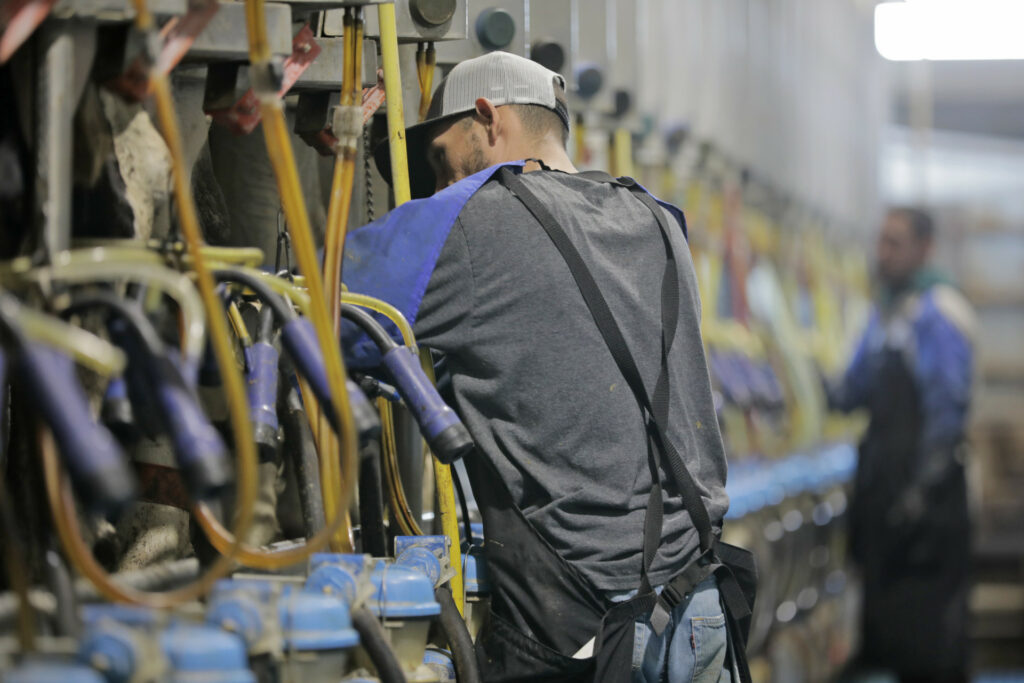
“We still want them to have a wide body frame,” Abbott said, “because if their bodies are too small, they lose the capacity to turn forage into large volumes of milk. All genetic evaluations now focus on shorter stature. The tall genetics are still out there but people are staying away from them.”
Jorgensen echoed these thoughts: “We’ve been focusing on moderating stature for over a decade and there’s definitely a huge demand in the market for shorter cows,” he says. “Coming out of World Dairy Expo, we see that stature is still very important in the show world, but even in that world, there is a shift in focus towards balance.”
Bosch also noted this shift: “We have also seen trends in the show ring start to align more towards selecting cattle that can be productive in real-world environments, including an increased emphasis on cows of more moderate stature.”
Other breeding traits
For the past 7 years, Select Sires has put considerable effort into mastitis resistance. Jorgensen and his colleagues consider this the next frontier in making cows healthier and live longer. And right now, this aspect of breeding is becoming more critical by the day in the US because of the huge trend of breeding beef-dairy crosses to sell for beef slaughter.
“There is nothing to show that the beef-cross trend is waning,” Jorgensen notes. “The profit dairy producers make from these cattle is too good to reverse course. So, we’re sitting here today with historical lows in our dairy cow replacement population, and we are going to see a contraction in the US dairy herd as a result.”
He explained that in the past, producers generally held an excess of replacement heifers and they had the choice to cull a cow that was unlikely to perform as well as one of the heifers – but few producers have that luxury right now. “We didn’t want to raise excess females anymore and the price of crosses has been so high,” he said, “and now the female population is very, very low.”
Mastitis in the US
Cows are therefore going to need to live longer and have fewer health events. Since mastitis is a major reason for culling cows (cost of medication, milk quarantined until antibiotic withdrawal period is over), better mastitis resistance traits are sorely needed. At the same time, Jorgensen points out that mastitis incidence has increased in the US because many farms have replaced sand bedding with separated manure solids from the farm’s methane digesters or some other manure reclamation system.
“For the same reason, we also need cows with fewer or no lameness issues,” he explained. “And we also need to put more emphasis on fertility and calf welfare traits. Every calf is incredibly important, with as few health setbacks as possible. We need to improve completion rates – making sure every heifer makes it into the milking stream. The rate is currently about 88% and it needs to be much higher.”
Cows can and will go from an average of 2.4-2.6 lactations to 3.5-4 lactations, said Jorgensen, but only if they are healthy. “The balanced cow is what we should be striving for. I can’t stress that enough.”
Looking to the future, Bosch is very positive about these and all other aspects of Holstein breeding, and firmly believes that they are ‘truly’ the breed of the future. “Our diverse genetic base allows dairy farmers to select for the kind of cattle that will be most profitable in their individual situation, no matter what their goals are,” she said. “And genomic selection is allowing Holstein breeders to make genetic progress faster than ever before.”
Join 13,000+ subscribers
Subscribe to our newsletter to stay updated about all the need-to-know content in the dairy sector, two times a week.



